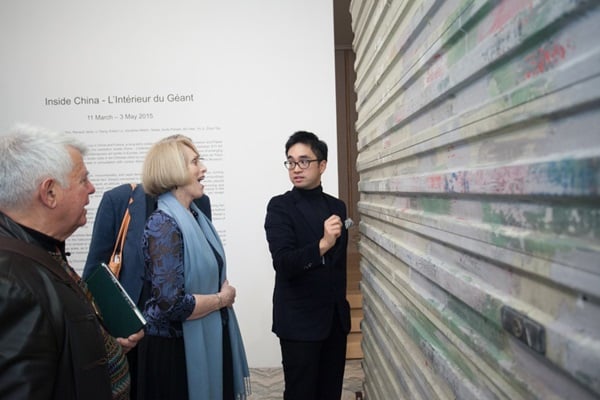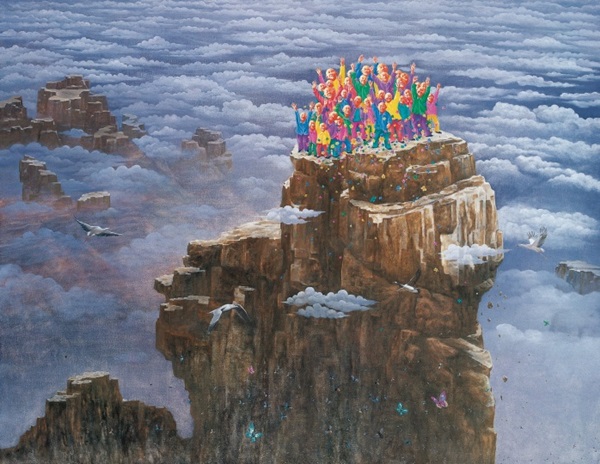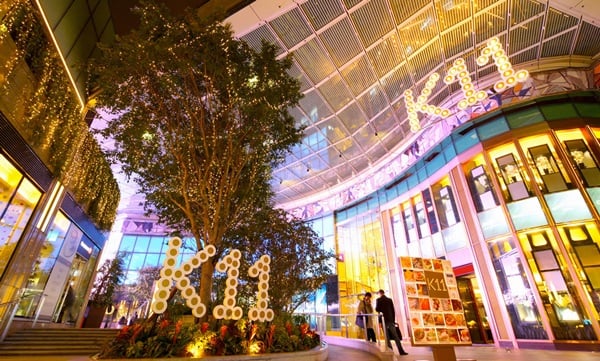Analysis
Discover the Top Chinese Art Collectors and What They Really Buy
Meet the new breed of powerful Asian buyers.

Meet the new breed of powerful Asian buyers.

Liz Flora

In the award-winning film 2013 film A Touch of Sin by Jia Zhangke, a cameo by the director provides a very telling picture of the way people think about wealthy Chinese art collectors: Jia plays a rich tuhao (crass nouveau riche) businessman talking on the phone to an assistant about a work for sale by acclaimed artist Xu Beihong. “Xu Beihong? Buy it. Great investment,” he says curtly before hanging up. He can’t be bothered to set up a time to view the piece himself—instead, he’s at a brothel.
The idea that China is overrun by speculative collectors who neither know nor care about the venerated works they’re buying is being turned on its head by a new generation of Chinese art enthusiasts making their mark on the global art world. This small but influential group is an example of the enormous growth of “new money” in China. They are becoming a major cultural force both at home and abroad as their art-related pursuits expand far beyond the auction block (see artnet News Top 200 Collectors Worldwide for 2015 Part One and Part Two).
This was clear in artnet News’ recently released rankings of the top 200 global art collectors, which profiled 12 Chinese collectors and couples who wield significant international influence. This isn’t due to their big-ticket purchases alone, it also reflects their passion for art—especially by some of China’s most important artists, both historical and contemporary. In addition to setting global records while scooping up high-profile Asian and Western pieces, they’re pursuing memberships in powerful art organizations, sponsoring new platforms for exchange, setting up foundations, and building new museums to house their collections.

Detail of a Tibetan thangka purchased by Liu Yiqian for $45 million at Christie’s in November 2014.
Photo: Courtesy of Christie’s.
Liu Yiqian and Wang Wei are one of Asia’s most world-renowned collecting power couples. They aren’t shy about spending big on high-profile antiques. For example, they purchased a $45 million Tibetan tapestry commissioned by a Ming emperor at Christie’s Hong Kong in November 2014, which marked the highest price of any piece of Chinese art ever sold at auction. Liu is also known for his purchase of a 15th-century Ming Dynasty imperial porcelain “chicken cup” for $36.3 million at Sotheby’s Hong Kong in July 2014, and he most recently spent $14.7 million on a Song Dynasty vase purchased at Sotheby’s Hong Kong in April 2015 (see Chinese Collector Uses AmEx to Buy $36 Million Chicken Cup).
The taxi driver-turned billionaire and his wife’s 20 years didn’t make the purchase just for their own enjoyment or for speculative purposes. They have established the Long Museum, which has two Shanghai branches that collectively house China’s largest private collection of art. In addition to exhibitions, it sponsors academic papers, lectures, workshops, and training in art eduction.

Fang Lijun’s 2008-09 is featured in Liu Yiqian and Wang Wei’s Long Museum.
In fact, China has been experiencing a boom in art museums thanks to this influential group of collectors. Lu Xun, the son of Lu Jun, a real estate developer and the president of the Sifang Culture Group, opened the Sifang Art Museum near Nanjing in 2013. Meanwhile, nightclub tycoon Qiao Zhibing is in the process of turning five empty oil tanks outside Shanghai into a new contemporary art center. Another pair of collectors on the list, husband Lin Han and wife Wanwan Lei, recently opened the M Woods Museum in Beijing’s art district. They’re serious about the knowledge they’re bringing to the table: Lei has studied art administration at China’s Central Art Academy and New York’s Columbia University.
The growing influence of new wealth in China has had a significant impact on the international art world—China is now the second-biggest art market in the world. While speculative and investment-focused buying isn’t uncommon and the Touch of Sin parody reflected a real phenomenon, it’s not the only force shaping the market, according to a recent Jing Daily interview with China Guardian President Hu Yanyan. “China’s art market has developed rapidly over the past few years, and most people still treat it as an investment. But, from time to time, the market will have a shakeup that will actually end up a wash for the speculators,” she said. “Therefore, the attitude of only entering the auction industry for the purpose of speculation and profit is not a good choice. After several ups and downs, the market is still relatively stable due to the people who have a real love for art.”

Image: Courtesy K-11.com, Hong Kong.
In addition to museums, the collectors are finding other creative ways to hold influence over the arts in China. David Chau and Kelly Ying back Shanghai galleries Leo Xu Projects and Antenna Space, and founded the new Shanghai art fair Art021. Meanwhile, billionaire Adrian Cheng founded the K11 Art Foundation, which supports art villages in Wuhan and Guiyang and features a collection with many international artists such as Yoshitomo Nara and Olafur Eliasson. Alan Lau sits on the board of the nonprofit art space Para Site in Hong Kong.
These collectors’ international influence is significant as well. Cheng was invited to join the Tate’s Asia-Pacific Acquisitions Committee in 2012, where he joins Alan Lau and Richard Chang. Chang is also a member of the Tate’s International Council, as well as a trustee of the Royal Academy in London, MoMA PS1, and the Whitney Museum in New York (where he also co-founded and chairs the performance committee).
Furthermore the tastes of these collectors span both Asian and Western works. Contemporary and/or classic Chinese works are popular with virtually all of them, such as pieces by Liu Wei, Xu Zhen, Yang Fudong, Zhang Enli, Ai Weiwei, and Cao Fei, to name just a few. As a result of their growing wealth, Chinese contemporary art prices are slowly gaining ground on the price gap that exists with blue-chip pieces by Western artists.
On the Western side, one of the most high-profile acquisitions was billionaire Wang Jianlin’s purchase of Picasso’s Claude and Paloma for $28.2 million at Christie’s in November 2013. Works by Andy Warhol are also especially popular among China’s top collectors, such as Alan Lau, who purchased Andy Warhol’s Green Car Crash (1963), which sold for $71.7 million at Christie’s New York in 2007 and real estate investor Joseph Lau, who is known for purchasing Warhol’s iconic Mao portrait in 2006.
Despite their significant global influence, many of these aficionados are extremely new to the art world, and are often very young. Lin Han’s first ever piece of art purchased was a Zeng Fanzhi painting he bought 2013, while Adrian Cheng is one of the youngest billionaires in the world. If this is what the art world is already seeing from this fresh new collector contingent, it can only expect a growing amount of power and influence from the Chinese market in the decades to come.
This article was submitted by artnet News content partner Jing Daily. Follow @JingDaily on Twitter and artnet News on Facebook.